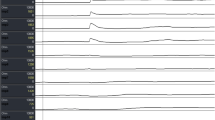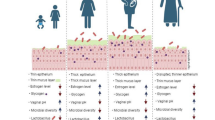Abstract
Although the urothelium has been traditionally thought of as a passive barrier between urine and detrusor muscle, new studies have shown that the urothelium is a highly specialized structure involved in antigen presentation, micturition reflex, metabolic secretion, inflammatory regulation, and sensory afferent functioning. Data from several laboratories have shown that the urothelium can respond to thermal, mechanical, and chemical stimuli. The earlier findings (activation of urothelial transient receptor potential channel vanilloid 1 producing the second messenger nitric oxide, which in turn triggers suburothelial sensory nerves) demonstrate how the urothelium acts as a transducer, releasing chemicals that target adjacent bladder cells and sensory neurons. We now know that bladder urothelium acts also as a transducer whereby afferent neurons, via urothelial mechanoafferent transduction, are involved in the micturition process and the pathogenesis of bladder disorders. This paper highlights the important role that the urothelium has in bladder pathophysiology.
Similar content being viewed by others
References and Recommended Reading
Lazzeri M: The physiological function of the urothelium-more than a simple barrier. Urol Int 2006, 76:289–295. Comprehensive review of the urothelial anatomy, function, and pathophysiology.
Birder L: Role of the urothelium in bladder function. Scand J Urol Nephrol Suppl 2004, 215:48–53. Review of the role that the urothelium plays in bladder function and different pathologic states.
Kanai A, de Groat W, Birder L, et al.: Symposium report on urothelial dysfunction: pathophysiology and novel therapies. J Urol 2006, 175:1624–1629. Symposium report detailing what we know about urothelial function and the importance of urothelium in disease processes that were once thought to be bladder dysfunction.
Birder LA: More than just a barrier: urothelium as a drug target for urinary bladder pain. Am J Physiol Renal Physiol 2005, 289:F489-F495.
Andersson KE, Hedlund P: Pharmacologic perspective on the physiology of the lower urinary tract. Urology 2002, 60:13–20.
Birder LA, Nakamura Y, Kiss S, et al.: Altered urinary bladder function in mice lacking the vanilloid receptor TRPV1. Nat Neurosci 2002, 5:856–860.
Chuang HH, Prescott ED, Kong H, et al.: Bradykinin and nerve growth factor release the capsaicin receptor from PtdIns(4,5)P2-mediated inhibition. Nature 2001, 411:957–962.
Yoshida M, Inadome A, Maeda Y, et al.: Non-neuronal cholinergic system in human bladder urothelium. Urology 2006, 67:425–430.
Hegde SS: Muscarinic receptors in the bladder: from basic research to therapeutics. Br J Pharmacol 2006, 147(Suppl 2):S80.
Kumar V, Cross RL, Chess-Williams R, et al.: Recent advances in basic science for overactive bladder. Curr Opin Urol 2005, 15:222–226.
Author information
Authors and Affiliations
Corresponding author
Rights and permissions
About this article
Cite this article
Moore, C.K., Goldman, H.B. The bladder epithelium and overactive bladder: What we know. Curr Urol Rep 7, 447–449 (2006). https://doi.org/10.1007/s11934-006-0052-7
Issue Date:
DOI: https://doi.org/10.1007/s11934-006-0052-7




